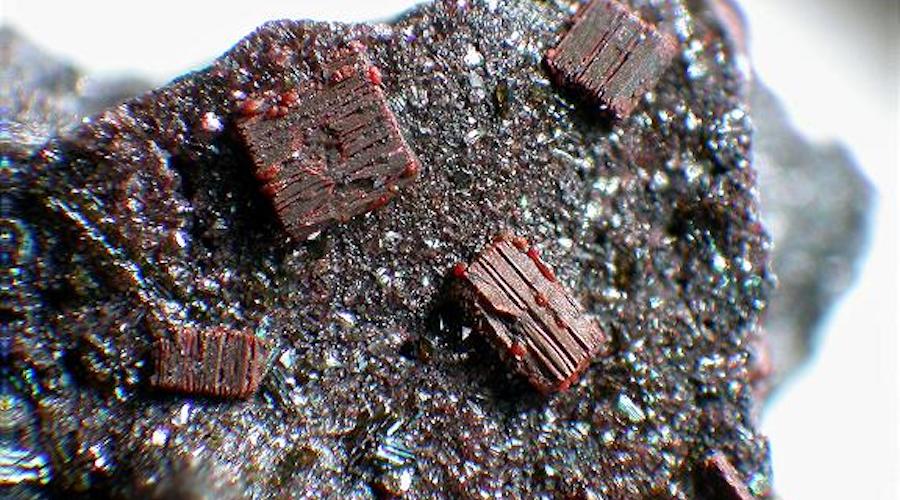
Geologists and materials scientists at the University of Erlangen-Nuremberg discovered a new way of finding previously unknown deposits of rare earths, or rare earth metals, worldwide.
In a paper published in the journal Geology, the researchers explain that contrary to what their name might suggest, sources of rare earth elements or rare earth metals are distributed fairly equally all over the world. However, there are only very few sources that are economically viable and they propose using a new indicator to identify such deposits.
When inspecting rock samples from the Vergenoeg fluorite mine in South Africa, they discovered that fayalite crystals in the sediment of granite-like magma can contain large amounts of heavy rare earth elements. The mineral, which is reddish-brown to black in colour, is mainly mined for use as a gemstone and is also used for sandblasting. Fayalite can be found worldwide in igneous rock and abyssal rocks.
Fayalite crystals in the sediment of granite-like magma can contain large amounts of heavy rare earth elements
“Atom probe tomography maps confirm the incorporation of the HREEs into the fayalite crystal lattice, facilitated by lithium acting as a main charge balancer and by high REE contents in the highly fractionated felsic parental melt that is related to the Bushveld LIP [large igneous province],” the article reads. “The high HREE concentrations of fayalite in concert with its high modal abundance (>95 vol%) indicate that the fayalite cumulates are the main host for the HREE mineralization of the Vergenoeg deposit.”
To reach this conclusion, the scientists used laser ablation–inductively coupled plasma–mass spectrometry analysis and noticed that cumulate fayalite in the Paleoproterozoic Vergenoeg F-Fe-REE deposit of the Bushveld LIP contains the highest heavy REE contents ever recorded for the mineral olivine, with HREE enrichment of as much as 6000× chondritic values.
“Since heavy rare earth elements are becoming increasingly scarce on the world market, the discovery of fayalite as a new potential source for locating new deposits of rare earths is extremely important for the economy,” Reiner Klemd, one of the authors of the study, said in a media statement.
At present, most known and economically viable sources of rare earths are located in China, where more than 80% of them are refined. This has resulted in a near-monopoly situation, with the Asian giant dominating international trade, particularly in heavy rare earths.
4 Comments
Glenn Corriher
Very informative
David
Governments and industry leaders as well you are doing nothing but creating a serious world problem.
You buy and especially sell what you have to countries like China
This ends up being a serious problem
You being the major problem
You are giving away your resources to a country built on controlling others, They build war machines, When not one country has invaded them,
You heard of a Trojan horse
Your stupidity is doing exactly the same thing
They have now got a huge army and it will only get worse,
Stop being the problem and stop selling and buying all products made in China, That also goes for Russia.
Graham King
Funny, the very same thing could be said about the USA
Edeka friday
Stop complaining about the Chinese, people have more trust on them than the west